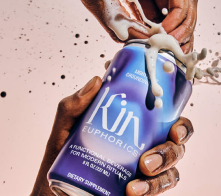7 out of 10 online shoppers abandon their carts, representing billions of dollars in lost revenue.

Imagine if you could instead reliably recoup even some of those lost sales.
Using retention marketing tactics, you can re-engage customers who have abandoned their carts and bring them back to your shop.
Read on to understand everything you need to start putting that lost revenue back in your pocket where it belongs.
What is Retention Marketing?

Retention marketing encourages customers to return to your website or store to make repeat purchases. It means focusing on the customer's experience and building brand loyalty to boost word-of-mouth advertising.
At its core, retention marketing means keeping the customers you already have and increasing their spending on future purchases.
Your business can utilize many effective retention marketing strategies, including reclaiming abandoned cart revenue.
The bottom line is to create engagement and loyalty in the customers you have already converted.
This loyalty also leads to reaching new customers or clients through word of mouth.
The Goal of Retention Marketing

Retention marketing aims to keep customers engaged with your company and product to increase their lifetime value to your business. The end goal of retention marketing is to increase your profits. For example, in a recent article, American Express noted that it costs 6 to 7x more to get new customers than to retain old ones.
By changing the focus to keeping customers interested and engaged with your brand, you can spend less to make more profit in a shorter time.
Why is Retention Marketing Important?
Spending less on marketing while making more sales is a dream come true. This is why retention marketing is essential to any modern business.
In addition, advertising on every platform has become much more expensive. According to Digital Information World and Business Insider, we are seeing huge increases in social media marketing costs.
For example, Facebook ads rose 89%, while advertisements on YouTube now cost 108% more than last year.
Clearly, the cost of acquiring new customers is only going up, so retention marketing is becoming even more critical.
Benefits of Retention Marketing

There are many benefits to retention marketing.
One of the most significant benefits, besides the increase in profit margins, is that it increases the lifetime value of your customers.
Happy and loyal customers will buy more, come back more often and tell others about you.
When you make efforts to engage with old customers, they reward you with increased sales. As a result, you will have to spend less on advertising.
Challenges of Retention Marketing
Understanding your customer's wants and needs deeply enough that you can keep them happy and engaged takes some work.
Likewise, setting up the required metrics to accurately measure your campaigns' results can take time.
Making sure your customers have a positive experience with your brand takes time and effort.
Customer service can be expensive and hard to get right if customers have unrealistic expectations.
It can also be challenging to show customers over time that they are still appreciated.
Retention Marketing vs. Acquisition Marketing: What's the Difference?

Retention marketing and acquisition marketing are two very different types of marketing. They have different goals and employ different tactics.
Acquisition marketing is more direct and easier to measure.
In contrast, retention marketing is often concerned with subjects such as loyalty, which is more of an indirect result of many combined efforts.
Main Differences Between Retention and Acquisition Marketing
The most significant difference between these tactics is the type of customer they focus on.
Retention marketing focuses on customers you already have, while acquisition marketing focuses on getting new customers.
The actions taken in Retention marketing campaigns ensure that customers continue purchasing products in the long term.
Retention marketing tactics build loyalty and connection with your customers.
In contrast, acquisition marketing strategies focus on advertising to gain new customers.
How Should You Divide Your Marketing Spend Between Retention and Acquisition
Deciding how to divide your marketing budget between retention and acquisition depends on your current customer profile.
Brandalyzer does a great job of breaking down the mathematics of this complicated formula.
However, you can't go too far wrong if you spend 75% of your marketing budget on retention.
However much you decide to spend, it is clear that focusing more on retention than on acquisition will lead to greater success for your business.
Forbes recently conducted a study, and one of the notable findings was that merchants that spent more on retention in the last 1-3 years had close to a 200% more likelihood of being successful than their counterparts who spent more on acquisition.
Types of Retention Marketing
There are many types of retention marketing, and you can choose the tactics that resonate most with your business.
For example, an online coaching portal could send personalized messages to encourage clients through SMS messaging.
Here are some other types of retention marketing campaigns:
- Reactivation: Scooping up those customers who already showed interest and giving them a great experience with your brand is one of the best retention marketing tactics available.
- Simple Returns Policy: This makes people more likely to buy if their fear of being unable to make a return easily is removed with a simple, easy-to-find policy.
- Referral: Word of mouth is the least expensive and most profitable way to get new clients.
- SMS Marketing: The most personalized way to connect with your potential clients.
- Onboarding: Usually one of the first places to focus on.
- Subscriptions: This is the best way to automate repeat purchases.
- Content: Creating content around a great cause can help build loyalty with your customers when they see your values align with their own.
- Loyalty and Rewards: This is often the best way to get your audience to buy more frequently.
- Community: Building a community of people who share values and creating a sense of belonging with your customers will keep them loyal for a lifetime.
What Are the Most Effective Retention Marketing Tactics?
Retention marketing tactics don't have to be expensive. However, the most effective strategies are thoughtful to engage repeat customers.
Email marketing to recapture abandoned cart revenue is one of the most profitable and effective strategies.
According to the Harvard Business Review, It is best to concentrate on the initial experiences a customer has with you in your retention marketing efforts.
Focusing on the first purchase experience statistically brings the most ROI and should be taken care of first in a retention marketing campaign.
Personalization as an Effective Retention Marketing Campaign
Personalization can be used to enhance any of the other highly effective tactics mentioned above. You can employ personalization as a tactic through the many stages of the customer's journey.
Personalization as a retention marketing strategy has been shown to increase the number of customers a business gains and their lifetime value to you.
This personalization tactic provides valuable content across channels like email, social media, or even (SMS) text messages!
Which Retention Marketing Tactics are Right for Your Business?

Finding the right tactics for your business can depend on your niche. Make data-driven decisions to decide on the best customer retention strategy.
First, find the right tools and formulas and measure your customer's data.
Then find out what successful metrics are for your business.
Looking at what successful metrics are for your industry is an effective way to begin. Then measure your customer data.
With the data in hand, you can see where you fall short. This will empower you to create the best retention marketing tactics for your business.
How to Create an Effective Retention Marketing Strategy
Decide what tactics will bring you the most profit and quickest returns. Target these first to create an effective retention marketing strategy.
Using the right tools is integral to creating an effective retention strategy. They will help you determine your goals and inform your strategy.
For example, if you recognize that you have a lot of dead emails on your list and want to bring these lost customers back, you can utilize Retention.Com's Reactivate campaign. This can help you increase your email opening rate from 2-3% all the way up to 40%.
What Tools Should be Implemented?
Having Customer Retention Management tools and identity resolution software can make all the data about your customer base easily accessible.
Another way to increase customer satisfaction while gathering data about them is to install a chatbot on your website.
When you have the information you need about your customers, it is much easier to tailor content for them.
Steps to Creating Your Retention Marketing Strategy
To create an effective retention marketing strategy, we recommend the following steps:
- Determine your churn rate.
- Make a User Journey Map.
- Focus on the first purchase experience and onboarding to begin.
- Use behavior analysis tools.
- Create personalized customer communications using data.
- Implement an easy way to collect feedback from your customers.
It is a great idea to concentrate first on the projects that will give you the most significant return and then go to the less profitable but still rewarding projects. For example, focus on the first purchase.
How to Measure the Success of Your Retention Marketing Efforts

Measuring the success of your marketing efforts with cutting-edge tools that give you accurate data will bring you the most accurate results.
Use mathematical formulas that allow you to accurately pinpoint your statistics.
You can find many of these on the Appcues Blog, where they explain the different statistics you can measure along with the formulas.
For example, churn rate = (number of customers at the end of the year - new customers)/number of customers at the beginning of the year.
Here are some of the ways you can measure your success with your retention marketing efforts:
- Churn rate - monthly, quarterly, or yearly
- Average session duration
- Active users-weekly, monthly, daily
- Monthly recurring revenue and revenue churn rate
- Engagement Rate
- Reactivation rate
- Customer lifetime value
- Cumulative revenue
- Customer Satisfaction rate
- Net promoter score
- Renewal rate- for subscription services
Why are Success Measurements Important?
Peter Drucker, the first thought leader in business management, famously said, "If you can't measure it, you can't improve it."
To guide your strategy, measure which tactics work best with your customers. This way, you can direct your budget to the most effective campaigns.
The Best Success Measurements for Retention Marketing
In retention marketing, some of the most profitable success measures are product return rate, ROI, revenue and customer churn, customer lifetime value, repeat purchase ratio, and time between purchases.
It is best to find the measures that mean success for your niche. For example, in some niches, buying only one or two products in a lifetime is common.
Comparing the repeat purchase ratio for that business to the ratio desirable for most stores would create unrealistic expectations.
Finding out what metrics are considered successful for your niche is worthwhile.
Tools to Measure the Results of Your Campaign
Every website needs tools that measure your marketing data. These tools will let you know the ROI of your retention efforts.
Some of the essential tools are Google Analytics and Retention.com.
Combining these two tools will give you the information you need to gather the statistics to measure your retention marketing efforts.
For example, with Retention.Com, you can measure and keep track of your cart abandonment rate and the abandoned cart recovery rate.
On your Retention.com dashboard, you get real-time reporting. For example, you can easily see your revenue and ROI tracking and how many people have added to the cart, all in one place.
Re-engage with Your Customers and Reclaim Abandoned Cart Revenue
Now that you know how to start measuring your data and how you can utilize retention marketing to 5- 10x your current profit margins, nothing can stop you!
If you're still unsure how to re-engage with your customers and reclaim those abandoned carts, then book a demo with Retention.com. We can show you how easy it is.

